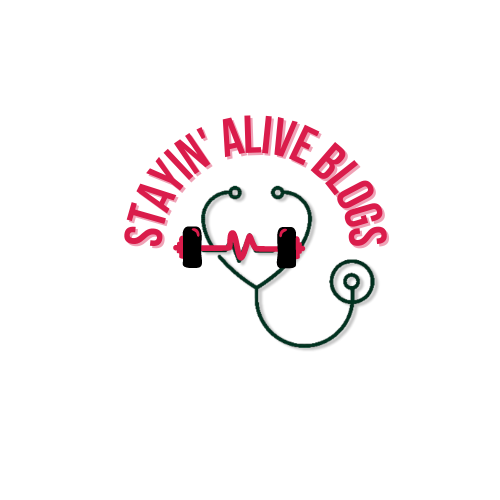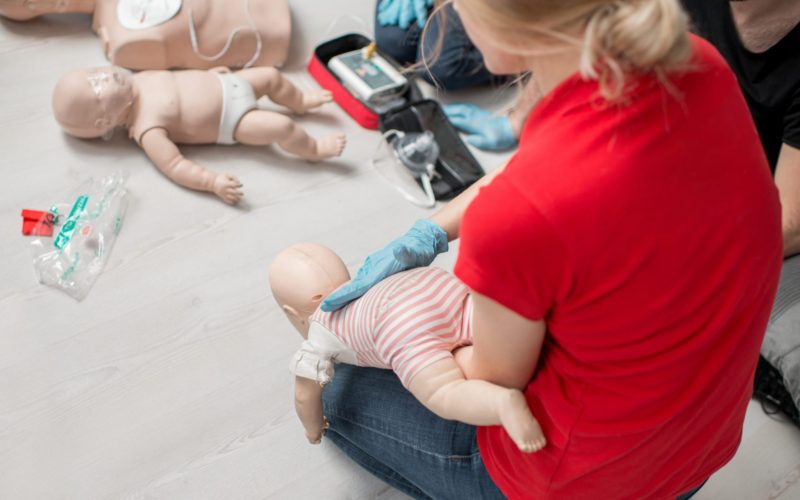Choking is a serious medical emergency that can be especially dangerous for infants, who may not be able to cough up an object blocking their airway. If you find yourself in a situation where an infant is choking, it’s essential to take quick action to help them. Here are some steps you can take:
-
Identify Active Choking: The first step is to determine whether the infant is actively choking or not. Check if the infant is coughing or not. If the infant is coughing, that means they are still able to clear their airway, and no intervention is required as long as they are coughing. However, if the infant is not coughing and becomes quiet (may become wheezy) and starts to show signs of cyanosis, it’s time to intervene.
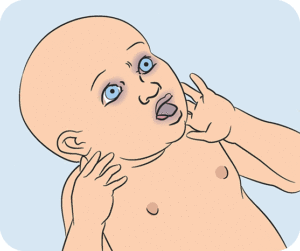
-
Call 911: When you have determined that the infant is actively choking, even if the infant is conscious, it’s vital to call emergency medical services (911 in the US/CANADA) immediately. Even if you are able to dislodge the object, the infant may still be at risk of complications, and having EMS on the phone can give them live updates of the situation and lower their response time.

-
Back Blows and Chest Thrusts: If the infant is responsive (moving around while choking), it’s essential to dislodge the object as soon as possible to prevent unconsciousness. Sit on the ground or in a chair with the infant lying on your arm facing down as show in the picture below. Make sure to support the infant’s head and start hitting them with the palm of your other hand between their scapula and give them five back blows. Make sure back blows are forceful in order to dislodge the object. If the object is dislodged, flip the infant over to your other arm and give them five chest thrusts (or chest compressions). Keep repeating back blows and chest thrusts until either the object is dislodged or the infant becomes unconscious.
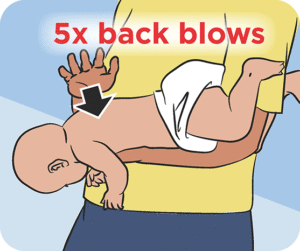
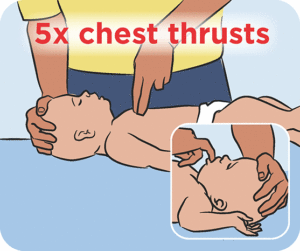
-
CPR: If the infant becomes unconscious while doing back blows and chest thrusts, lay the infant on a flat surface and start doing CPR (cardiopulmonary resuscitation). Remember not to perform back blows and chest thrusts on an unconscious infant. When performing CPR, make sure to check their mouth for the object before giving breaths. Scoop the object out if you see it. However, performing a blind mouth sweep can push the object back down.
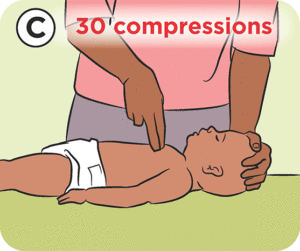
-
Watch for signs: If the infant starts coughing, you might have dislodged the object. Put the infant in a recovery position to clean their airway. The recovery position is a lying position on their side, with the head and chin tilted upward, to prevent choking again. Keep a close eye on the infant for any signs of complications and seek medical attention as soon as possible.
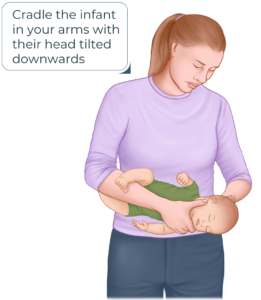
Remember, the key to helping a choking infant is to act quickly and confidently. If you are unsure of what to do or the infant becomes unresponsive, call 911 immediately but you can call 911 even if the infant is not unconcious but is actively chocking.
In conclusion, choking is a serious condition that can happen to anyone, including infants. Knowing how to recognize the signs of choking and how to act quickly is crucial to save a life. The first step is to determine if the infant is actively choking or not. If they are, calling 911 is never a wrong move, even if the infant is conscious. Back blows and chest thrusts are effective methods to dislodge the object from the infant’s airway, but if the infant becomes unconscious, performing CPR is necessary. Always remember to check the infant’s mouth for the object and avoid performing blind mouth sweeps. By being prepared and knowing what to do in case of choking, you can potentially save a life.
